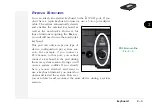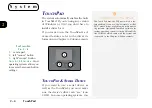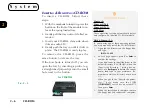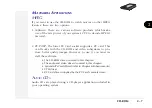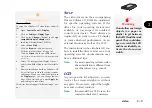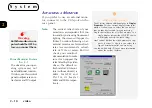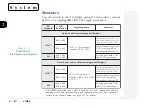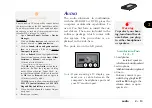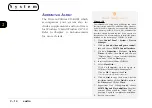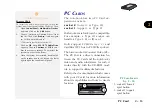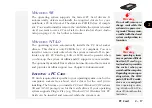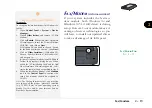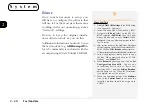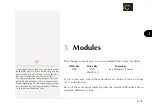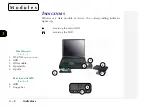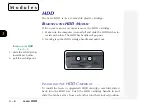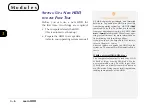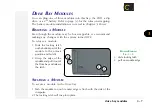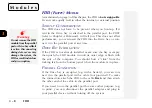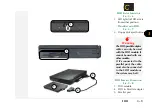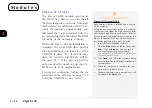
1
2
3
4
5
6
7
8
2 17
PC Card
W
INDOWS
98
The operating system supports the lastest PC Card drivers. It
automatcially detects and installs the required drivers for your
notebooks PC Card socket. The drivers are PCMICIA (rev. 2) compli-
ant. You can also install or remove the card while the system is turned
on. If you want to use a ZV card, refer to the side-bar about
Audio
Setup
on page 2-14 for further references.
M
Warning
Do not add, remove or
change cards while the
system is in a power sav-
ing mode. This may cause
a conflict with the stored
system configuration in-
formation.
M
Warning
Some operating systems
may experience difficul-
ties if an I/O card (e.g. a
fax/modem) is present in
the socket when you
warm boot the computer.
Depending on your oper-
ating system, the COM
ports (I/O) for PC Card de-
vices are reassigned.
Some operating systems
(e.g.
Windows 95 &
Win-
dows 98) do not have this
limitation.
W
INDOWS
NT 4.0
The operating system automatically installs the PC Card socket
drivers. This driver is only PCMCIA (rev. 2) compliant. You can
install or remove cards only when the system is turned off. In par-
ticular, any I/O PC Card (e.g. LAN or SCSI) must be present when
you boot-up the system. CardBus and ZV support are not available.
The optional SystemSoft Driver allows hot insertion and hot removal,
and provides CardBus support (see
Chapter 6: Enhancements
).
I
NSERTING
A
PC C
ARD
PC Cards require drivers specific to your operating system: one for the
computers sockets (see above), and a driver for the card youre
installing. The first time you install a PC Card,
Windows 95, Windows
98
and
NT 4.0
prompt you for that cards driver. If your operating
system supports Plug n Play (e.g.
Windows 95 & Windows 98
), PC
Cards can be inserted and removed while the system is on.

